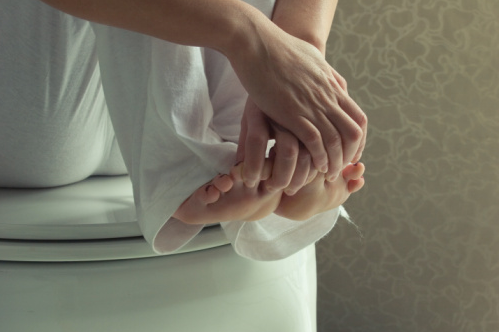
I’m a black woman with uterine fibroids. These noncancerous growths, also called intramural fibroids, line the muscular wall of my uterus. Technically benign, they threaten to grow into larger, painful masses that could ultimately rob me of the ability to bear children.
Fibroids are common in all women, but research suggests that African American women are significantly more likely to develop uterine fibroids. In fact, in addition to a family history of fibroids, being African American is at the top of the list of causes for the condition. And black women aren’t only at a higher risk for developing fibroids. They also tend to experience more severe symptoms.
As I consider my new diagnosis and explore treatment options, I reflect on the incidents that led me to this point. The signs of the condition were there, but I was never quite aware of them until my diagnosis. It’s important for black women to know about the unique risk they have for uterine fibroids and understand the scope of their options in order to face fibroids head-on.
Frustration and pain
Before my own diagnosis, I didn’t know much about fibroids — other than that they caused my mom to get a hysterectomy.
Having African American roots may very well have had something to do with this. For black women, fibroids develop at a younger age and grow larger than for other women. As a result, the fibroids are more likely to cause extreme pain, infertility issues, and lead to a hysterectomy.
How did my race make me more prone to reproductive issues? My diagnosis confused me. I didn’t understand why being black increased my risk. I wanted to return to the “regular” days of my adolescence, when I was a textbook case for normal periods.
I’d eventually learn that my mom and I weren’t the only ones in my family to deal with this condition. Although complications are rare, uterine fibroids had deeply impacted my female relatives. They had had procedures ranging from fibroid reduction to uterus removal. I wondered if I’d be the next story to tell. If uterine fibroids would change the course of my life. If I’d ever have another child.
“I wondered if I’d be the next story to tell. If uterine fibroids would change the course of my life. If I’d ever have another child.”
Growing up “regular”
I’ve always considered myself lucky in the reproductive area. This is mostly because I’ve always been “regular.” I got my first period at a “regular” age. I had a “regular” 28-day cycle, and I was able to maintain a “regular” weight for my short stature. Everything in my life remained “regular” up until my first child was born. Suddenly, I found myself going to the doctor more times than I could count for more pains than I could remember. After finding out I had retained placenta, I had no expectations of being “regular” again.
Persistent Pain
I’d always had back pain, intense menstrual cramps, and pain during sex. But so many women have the same problems that I thought they were just part of being “regular.” Many of the things I’d read about uterine-related health issues like endometriosis and polycystic ovarian syndrome were linked to irregular periods. And since my periods have always been on a predictable 28-day cycle, I believed that nothing was wrong. So when I started having the occasional cramp, I was uncomfortable but not alarmed.
Around six months postpartum, I began having occasional cramp-like sensations.
After 14 months of nursing, I thought my frequent uterine contractions marked the return of my old “regular” friend.
“My body is having trouble regulating itself,” I’d think to myself. Then it occurred to me that all the issues I’d had with retained placenta could’ve affected my reproductive cycle. So I started talking with holistic practitioners and thinking of a plan.
A natural cure
During a family trip to Colorado, curiosity led me into an apothecary. I had no intention of purchasing anything, I just wanted to know what the homeopathic world had to offer. But when the practitioner commented on my skin and the conditions that could relate to that symptom, I was sold.
I told her everything. I told her about my traumatic birth experience and the retained placenta. I told her about the frequent bloodless cramps I’d been experiencing. And I told her about my history of painful menstrual periods. She recommended raspberry leaf tea and an assortment of herbs believed to help reproductive issues and jump-start menstrual periods. I’d never had loose leaf tea before. I was excited to get started.
After a few days, I started cramping. I had some light spotting, which excited me. I was sure my period was finally back and I could live like before. But after a few hours, the pain multiplied and I couldn’t walk. I knew something was wrong. It was time to call a doctor.
A diagnosis
I’d never been big on taking medications, but I knew something had to be done. I made an appointment with my gynecologist to understand what was going on. After discussing the pain, she recommended an ultrasound. A few days after my ultrasound, the doctor called with the news: I had multiple uterine fibroids. She was nearly certain that they were the cause of my pain. Suddenly, all those years of gut-wrenching periods made sense.
Looking forward
I cried and moved around to reduce the pain. My frequent movement woke my husband, and he insisted that we go to the urgent care. Despite the fact that I was in extreme pain, the doctors found nothing. The doctor prescribed muscle relaxers and we went home. For the next three days, I had to take muscle relaxers around the clock in order to function.
During my cycle of ibuprofen and muscle relaxers, I remembered my tea and the benefits of raspberry leaf. I had nothing to lose, so I began drinking it. Soon, tea replaced every drink other than water. Within two weeks, I got my period for the first time in two years. I was in a lot of pain, but it felt worth it. There was hope to be “regular” once again.
My diagnosis is new, but my complications aren’t. I plan to have a laparoscopy and hysteroscopy to see if my fibroids can be managed with diet changes or if they should be removed. As time goes by, I truly believe the tea is helping. Even if that help is a placebo effect, it’s given me peace of mind. Fibroids may bring complications, but with homeopathic and medical solutions, there’s hope.
For other women out there, I encourage you to get to know your family history and listen to what your body tells you. My family history and predisposition to uterine fibroids were signs I missed. Whether I could have prevented them or not doesn’t matter now. I’ve learned that it’s important to know your body and your options, so you can be in control of your future.
Rochaun Meadows-Fernandez is a freelance writer that specializes in health, sociology, and parenting. She spends her time reading, loving on her family, and studying society. Follow her articles on her writer’s page.
This original story was published on Healthline.com.
